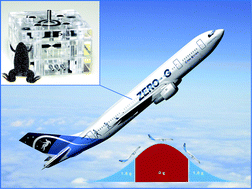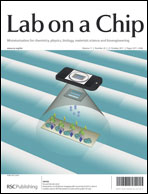Microfluidic platform for electrophysiological studies on Xenopus laevisoocytes under varying gravity levels†
Abstract
Voltage clamp measurements reveal important insights into the activity of membrane ion channels. While conventional voltage clamp systems are available for laboratory studies, these instruments are generally unsuitable for more rugged operating environments. In this study, we present a non-invasive microfluidic voltage clamp system developed for the use under varying gravity levels. The core component is a multilayer microfluidic device that provides an immobilisation site for Xenopus laevisoocytes on an intermediate layer, and fluid and electrical connections from either side of the cell. The configuration that we term the asymmetrical transoocyte voltage clamp (ATOVC) also permits electrical access to the cytosol of the oocyte without physical introduction of electrodes by permeabilisation of a large region of the oocyte membrane so that a defined membrane patch can be voltage clamped. The constant low level air pressure applied to the oocyte ensures stable immobilisation, which is essential for keeping the leak resistance constant even under varying gravitational forces. The ease of oocyte mounting and immobilisation combined with the robustness and complete enclosure of the fluidics system allow the use of the ATOVC under extreme environmental conditions, without the need for intervention by a human operator. Results for oocytes over-expressing the epithelial sodium channel (ENaC) obtained under laboratory conditions as well as under conditions of micro- and hypergravity demonstrate the high reproducibility and stability of the ATOVC system under distinct mechanical scenarios.


 Please wait while we load your content...
Please wait while we load your content...